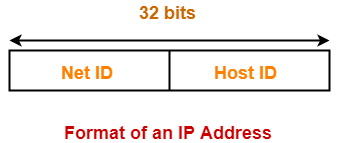Public IP:
A public IP Address is an IP address that can be accessed over the internet
It is globally unique, and can only be assigned to an unique device.
Private IP:
It is used to assign computers within your network without letting them directly expose to the internet
Now Who Manage IP Addresses?
Who determines whether an…IP address is public or private?That is the IP Address Governing Authorities and there are two of them.
(1)The First one is pronounced IANA and stands for Internet Assigned Number Authority.
(2)The Second one is ICANN which stands for…Internet Corporation for Assigning Names and Numbers..
These two organizations are the organizations that determine whether an IP address is allowed to be used as a public IP address or only as a private IP address..
We know A public IP address is set aside for use on the internet. Each IP address on the internet needs to be unique. That means you cannot use an IP address on the internet that's already in use on the internet.
IPs on the internet can only be used once. The IP addresses are registered with IANA and they're managed by ICANN. The way to ensure that IP addresses…are not reused on the internet, is to only use IP addresses that are registered with IANA and managed by ICANN
IANA distribute IP Range to 5 RIRs.
Now, What are RIR?We have to know abut that
A regional Internet registry (RIR) is an organization that manages the allocation and registration of Internet number resources within a region of the world. Internet number resources include IP addresses and autonomous system (AS) numbers.
There are Five RIRs in the world
Global IPv4 run out
All of the Regional Internet Registries (RIRs) have either limited supplies or have run out of available IPv4 addresses. ARIN and the RIPE NCC ran out of their available supply in 2015 and 2019 respectively, with APNIC, LACNIC and AFRINIC rationing supplies according to their community policies.
RIRs
The African Network Information Center (AFRINIC) serves Africa.
The American Registry for Internet Numbers (ARIN) serves Antarctica, Canada, parts of the Caribbean, and the United States.
The Asia-Pacific Network Information Centre (APNIC) serves East Asia, Oceania, South Asia, and Southeast Asia.
The Latin America and Caribbean Network Information Centre (LACNIC) serves most of the Caribbean and all of Latin America.
The Réseaux IP Européens Network Coordination Centre (RIPE NCC) serves Europe, Central Asia, Russia, and West Asia.
So, We are in APNIC. It is our main focus
APNIC (the Asia Pacific Network Information Centre) is the regional Internet address registry (RIR) for the Asia-Pacific region.It is one of the world's five RIRs and is part of the Number Resource Organization (NRO).
APNIC provides numbers resource allocation and registration services that support the global operation of the internet.It is a nonprofit, membership-based organization whose members include Internet service providers, telecommunication providers, data centers, universities, banks, national Internet registries, and similar organizations that have their own networks.
Website of APNIC: https://www.apnic.net/
We were discussing about Private & Public IP. Right? Again come to this point guys.
We have 5 classes of IPv4 address
To identify class, we will look onto only 1st Octet of my IP address.
How can identify Octet number?
Here, as 63 resided in 1st Octet & it is in 0 - 127, so this IP is a Class-A IP.
Dear guys, I hope now you will be able to identify classes of any IP. Right?
OK, if yes, please try these.
(1) 190.162.200.200 - It is a Class-B [Here-190 is in 128-191 which is range of Class-B]
(2) 201.46.200.200 - It is a Class-C [Here-201 is in 192-223 which is range of Class-C]
(3) 240.16.200.200 - It is a Class-E [Here-240 is in 240-255 which is range of Class-E]

















Very good article for learner
ReplyDeleteRed Prism Group is one of the best Data Science coaching in Noida, offering services from training to placement as part of the Data Science training program.
ReplyDelete